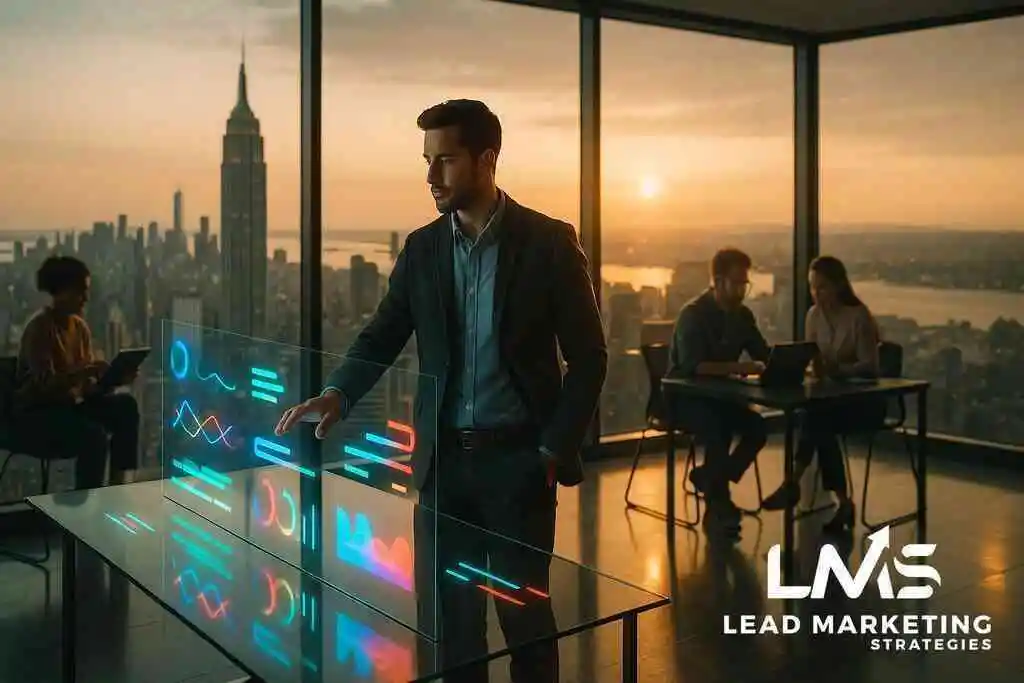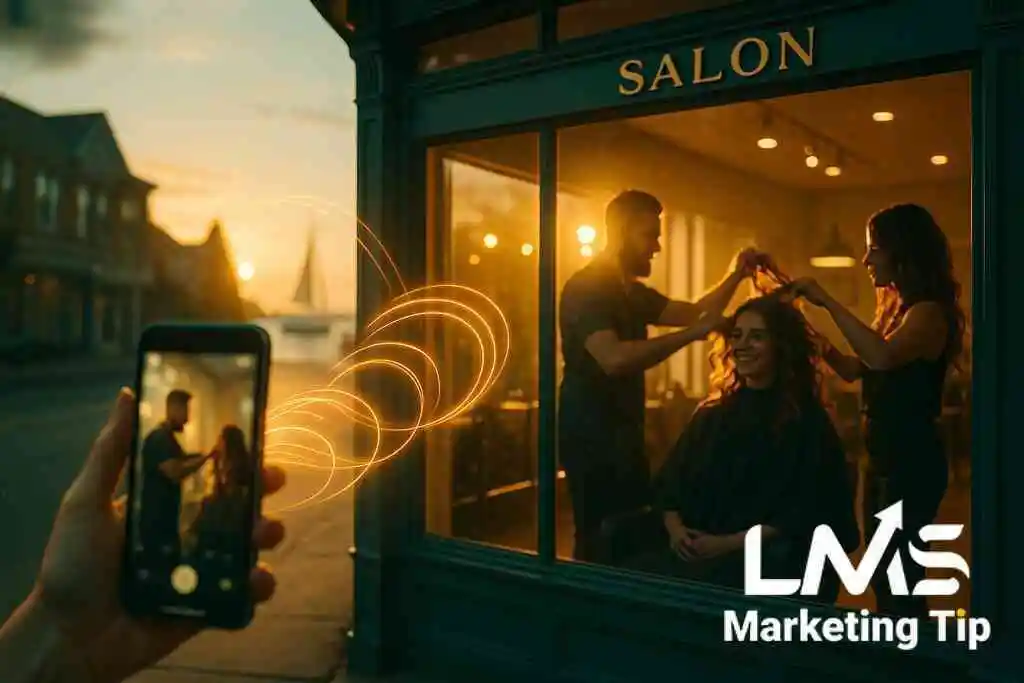
Navigating the Digital Skyline
Understanding the Role of Web Design in Marketing Strategy
In the realm of digital marketing, web design serves as a foundational component of any robust marketing strategy. A well-designed website can significantly impact a business’s ability to connect with its target audience. With the rapidly evolving nature of the digital landscape, web design has transcended beyond mere aesthetics. It plays a pivotal role in conveying a brand’s identity and message effectively, ensuring it resonates with users. When businesses embrace innovative web design techniques, they can achieve a seamless integration of brand elements, content, and user interaction. This not only optimizes user engagement but also enhances the overall digital marketing strategy.
The Intersection of SEO and Aesthetic Appeal
The balance between search engine optimization (SEO) and web design is crucial for online success. An aesthetically pleasing website that lacks SEO-friendly elements may struggle with visibility on search engines, compromising potential traffic. Crafting an SEO optimization technique should work harmoniously with design elements. Seamless navigation, fast loading times, and mobile responsiveness are just as vital as aesthetic elements like color schemes and font choices. This dual focus ensures that websites not only attract users but also achieve higher rankings in search engine results, offering a competitive edge in the market.
Web Design as a Catalyst for Brand Awareness
Web design has become more than just a digital storefront; it’s a strategic tool for building and reinforcing brand awareness. Thoughtful design choices help in distinguishing a brand in a crowded marketplace by creating a memorable user experience. Incorporating branding and design synergy in NY, businesses enhance their ability to communicate their core values and mission clearly. An impactful design encourages repeated visits and engagement, thereby fostering loyalty and brand advocacy. By leveraging strategic design principles, businesses can significantly boost their brand presence and ensure lasting impressions on their audience.
Unveiling Tomorrow’s Interfaces
Exploring Futuristic Web Interfaces and Their Impact
In the evolving world of web design, embracing futuristic web interfaces is paramount for staying ahead in the digital age. These interfaces leverage advanced technologies and innovative design practices to create immersive web experiences. Such designs are not only about aesthetics but also about drastically transforming the user journey through intuitive and engaging layouts. As businesses strive to captivate their audience, integrating elements like augmented reality and artificial intelligence can provide significant competitive advantages. Marketers can leverage these advancements to build stronger connections with their audiences, resulting in a more profound impact on brand recognition and loyalty.
The incorporation of cutting-edge web aesthetics reflects an industry-wide shift towards more dynamic, user-centered experiences. Websites are no longer static; they are vibrant ecosystems that adapt and respond to user interactions in real-time. With technologies evolving rapidly, it’s crucial that brands understand how to effectively implement these interfaces. By doing so, they not only enhance digital presence but also align with the latest web design trends for maximum reach and engagement.
Embracing Minimalist Web Design for Maximum Effect
Minimalist web design remains a powerful trend, offering clarity and elegance through simplicity. By reducing clutter, minimalist design directs focus to the essential elements of a website, thus enhancing its usability and navigation. In embracing this design philosophy, brands can effectively improve load times and responsiveness, ultimately contributing to a better user experience. This streamlined approach requires thoughtful consideration of every detail, from typography to white space usage.
The impact of minimalist design goes beyond aesthetics. It’s about creating a seamless experience that aligns with both user experience design principles and business objectives. When successfully implemented, it allows users to navigate effortlessly, find what they need quickly, and act with decisiveness. As businesses invest in crafting a minimalist web presence, they can achieve greater engagement while ensuring their message remains at the forefront. The result is a clear, compelling communication of the brand’s value proposition, essential for The Future of Digital Strategies.
Interactive Web Features That Capture User Engagement
Interactive features are pivotal in capturing and maintaining user engagement on any website. Elements such as dynamic content, interactive infographics, and engaging animations transform the user’s experience from passive to participatory. This interactivity fosters a deeper connection between the user and the brand, nurturing a rewarding user journey. Incorporating these features not only captivates attention but also contributes significantly to prolonged site visits and higher conversion rates.
Incorporating creative digital solutions into web design allows businesses to craft unique experiences that resonate on an emotional level. These interactive elements should be strategically integrated to support the overall marketing strategy, driving measurable results. For companies aiming to enhance engagement, investing in interactive web features is not just a trend; it is a necessity for remaining competitive in a bustling digital market, as highlighted in Exploring Lead Marketing Tactics. The focus should be on creating intuitive interfaces that prioritize user needs while delivering a visually stimulating experience that aligns with modern digital aesthetics.
Crafting Responsive Experiences
The Science Behind Mobile-First Design
In today’s digital age, the importance of mobile-first design cannot be overstated. As more users access the internet via mobile devices, adopting a mobile-first approach has become crucial. This strategy prioritizes designing for smaller screens first, ensuring that the website is optimized for mobile performance before adapting to larger screens. A key component of this methodology is understanding the unique user behavior prevalent on mobile devices, which often includes shorter attention spans and a preference for concise content. By focusing on elements such as streamlined navigation and touch-friendly interfaces, businesses can significantly improve user engagement and satisfaction.
Creating a mobile-first design is more than just resizing content; it’s about building a coherent user experience that translates across varying screen sizes. Utilizing responsive web techniques allows designers to create adaptable layouts that maintain aesthetic appeal and functionality regardless of device. By implementing these practices, brands can cater to a wider audience, ensuring accessibility and usability for users on the go. This strategy not only enhances the digital presence but also aligns with current web design innovations.
Responsive Design: Beyond Devices and Across Platforms
Responsive design has evolved beyond merely adapting websites for different device screens. Today, it encompasses creating experiences that transition seamlessly across various platforms, from tablets and laptops to wearables and smart TVs. This expanded scope ensures that users enjoy a consistent interface regardless of how they access a website, which is crucial for maintaining engagement and reducing bounce rates, as it is in Understanding Advanced Branding Strategies. A successful responsive design incorporates flexible grids, responsive images, and media queries to dynamically adjust to diverse user environments.
A pivotal aspect of responsive design is its role in enhancing SEO. By providing a single, consistent URL for content, responsive websites avoid the common pitfalls of duplicate content, which can negatively affect search engine rankings. Furthermore, Google favors mobile-friendly sites, making responsive design an effective strategy for achieving visibility on search engines. As businesses explore the possibilities of responsive design, understanding its far-reaching impact across digital platforms becomes essential for maintaining a robust digital marketing plan.
Accessibility as an Engine for Inclusivity in Web Design
Accessibility in web design is not merely a legal requirement but a strategic advantage in broadening reach and inclusivity. By designing websites that are accessible to all users, including those with disabilities, businesses can tap into a larger audience and foster a more inclusive brand image. This involves incorporating features such as screen reader compatibility, keyboard-friendly navigation, and alt text for images. Such practices ensure that all users, regardless of their abilities, can navigate and engage with web content effectively.
Implementing accessibility features also enhances SEO, as search engines increasingly prioritize accessible websites. Techniques like semantic HTML, appropriate heading structures, and optimized metadata contribute to better indexing and improved discoverability online. As organizations aim to build marketing-focused design strategies, prioritizing accessibility can lead to measurable results, increasing both engagement and conversion rates. By integrating these best practices, businesses not only meet legal standards but also demonstrate a commitment to social responsibility, enhancing their overall brand identity and loyalty.
As the digital landscape continues to evolve, incorporating elements like accessibility and responsive design into web development is critical. These features enhance user experience and deliver significant returns on investment by expanding reach and improving engagement. Exploring e-commerce marketing tips in NY can provide valuable insights into implementing these trends effectively.
Harnessing Strategic Web Optimizations
SEO-Friendly Design: Merging Visibility with Creativity
SEO-friendly design is a critical component of effective web development, harmonizing aesthetic appeal with search visibility. As the digital sphere becomes increasingly competitive, merging these elements requires a sophisticated understanding of both design aesthetics and SEO principles. Incorporating factors like semantic HTML and optimized metadata ensures that a website balances creativity with search engine preferences. This approach amplifies a brand’s digital footprint by increasing engagement and discoverability on platforms where potential customers search.
A crucial element in this process involves understanding the nuances of SEO trends evolving in 2025. By aligning design elements with forward-looking SEO strategies, businesses can proactively adapt to search engine algorithm changes. This foresight not only prevents loss of visibility but also supports sustained growth in search rankings. With a well-executed SEO-friendly design, companies establish a competitive edge and a robust digital marketing strategy.
Harnessing Web Design to Boost Conversion Rates
In the quest to boost conversion rates, thoughtful web design plays a pivotal role. The design must guide users logically through the information, facilitating seamless transitions from prospects to conversions. By focusing on strategic elements such as call-to-action placement and intuitive navigation paths, websites can engage visitors powerfully and persuade them to take desired actions. A visually appealing layout complemented by compelling content can mean the difference between a fleeting visit and a committed customer.
To optimize further, employing lead marketing for web development is essential. Integrating insights from marketing strategies ensures that every aspect of the design resonates with the target audience. This synthesis of marketing tactics and design expertise drives higher engagement and improves conversion metrics. As businesses refine their web design strategies, they unlock new opportunities for growth and customer acquisition.
Visual Storytelling: Elevating Content Through Design
Visual storytelling transforms ordinary content into immersive narratives, capturing users’ attention and fostering engagement. By leveraging visuals effectively, brands can communicate complex messages succinctly and memorably. Elements such as infographics, videos, and motion graphics can dramatically enhance a website by providing captivating points of interaction that invite users to explore content deeply.
Emphasizing understanding aesthetic web trends becomes crucial in developing impactful visual storytelling strategies. Staying abreast of design innovations allows marketers to deploy visuals that align with user expectations and industry standards, such as the demand for dynamic content presentation. This alignment not only strengthens user engagement but also builds brand affinity by aligning visual experiences with users’ emotional and cognitive needs.
Implementing these strategic optimizations in web design ensures not only a stunning online presence but also measurable improvements in user engagement and conversion outcomes. By combining visibility, design creativity, and visual narratives, brands can achieve clarity and augmented impact in their digital communications.
Marketing-Focused Architectures
Strategic Website Design for Measurable Results
Achieving measurable results in digital marketing requires a deliberate focus on strategic website design. By prioritizing both aesthetics and functionality, businesses can streamline the path to conversion, providing visitors with an intuitive journey from landing to conversion. Emphasizing critical design elements such as clear navigation, concise calls-to-action, and compelling visuals aligns with industry-specific goals, such as those seen in fashion marketing for New York designers. This strategic approach facilitates actionable insights and enhances lead generation efforts by delivering impactful user experiences that drive conversions. Implementing data-driven design decisions also enhances marketing campaigns, ensuring resources are allocated efficiently to optimize return on investment.
When constructing a marketing-focused digital architecture, pinpointing metrics is essential. By leveraging tools that track user interactions, harnessing this data can refine ongoing strategies, aligning with evolving market demands and ensuring sustained growth. It’s crucial for digital marketing agencies to integrate such performance metrics from the outset, safeguarding alignment with overarching business objectives.
Enhancing Digital Presence with Cutting-Edge Aesthetics
In the competitive landscape of web design, enhancing digital presence necessitates the incorporation of cutting-edge aesthetics. Brands seeking to distinguish themselves in a crowded marketplace can benefit from novel and innovative design approaches that captivate and engage. By embracing emerging web design innovations inspired by Laurel Hollow, companies can enhance their visual narratives, aligning digital experiences with contemporary audience expectations.
For businesses near Long Island, staying ahead requires vigilance in understanding digital marketing trends near Long Island. As the digital landscape evolves, embracing styles that resonate with modern aesthetics and functionality, building into frameworks ensures a vibrant and effective online presence. Additionally, integrating dynamic content displays fosters sustained engagement, transforming static page visits into interactive experiences that enhance brand loyalty and recognition.
Building Brand Identity Through Thoughtful Design
Establishing a robust brand identity relies on thoughtful design that harmonizes visual elements with core values. By prioritizing cohesiveness in design strategy, businesses can resonate more deeply with their target audiences, fostering a context in which brand experiences feel intuitive and personal. Top web design aspects by Marketing Tip can guide businesses in choosing elements that bolster brand identity while aligning with strategic marketing objectives.
In crafting these elements, appealing to a diverse audience through inclusive design is paramount. As web design trends shift towards personalization, incorporating user feedback and adapting design choices accordingly can greatly enhance relevance and effectiveness. American web designers’ expertise can be instrumental in creating meaningful connections through design elements that reinforce a memorable brand narrative, ultimately driving engagement and customer loyalty.
As you navigate these avenues of focused design strategies, remember that each element contributes uniquely to the overarching goal of enhancing visibility and performance in the digital sphere.
The Confluence of Expertise and Innovation
Leveraging American Web Design Expertise
American web designers have consistently set the benchmark for quality and inventiveness in the industry. Leveraging their experience offers businesses a distinct advantage when crafting user-centered designs that are both visually captivating and functionally superior. These experts understand the nuances of achieving SEO excellence, merging creativity with visibility to boost a digital marketing strategy. Their ability to integrate modern design principles with cutting-edge technology ensures that brands can effectively connect with their target audience.
The American approach to web design also emphasizes collaboration, encouraging active participation from clients to ensure the final product aligns with both brand identity and business goals. By partnering with professionals who prioritize innovative web design solutions, companies can craft websites that don’t just attract but also retain visitor attention. This synergy of expertise and creativity sets the stage for impactful digital experiences, driving notable improvements in engagement.
Case Studies: New York Web Design Triumphs
New York stands as a beacon of design innovation, evidenced by numerous successful web projects that have transformed digital landscapes. Case studies from the region reveal how local businesses have adeptly harnessed their digital presence to enhance brand visibility and conversion rates. Utilizing local New York SEO strategies, they’ve crafted optimized websites that rank competitively on search engines, drawing in targeted traffic and generating leads with efficacy.
These case studies highlight how strategic website design-combining elements like fast loading times, interactive features, and responsive layouts-can lead to measurable success. A notable example is the integration of data-driven strategies with aesthetic design, enabling businesses to individualize their digital marketing plans. By embracing the latest in web design trends, New York’s digital community continues to refine approaches that inspire and set industry benchmarks, emphasizing the importance of thoughtful and strategic web design.
Anticipating Web Design Evolution: Future Trends
As technology advances, anticipating the evolution of web design becomes imperative for maintaining a competitive edge. Future trends will likely emphasize personalization and inclusivity, crafting experiences that adapt seamlessly to user preferences and needs. With innovations like AI-driven designs and augmented reality interfaces, the way users interact with websites is poised to transform significantly. These developments herald opportunities for businesses to create highly engaging, immersive web experiences.
The adoption of these trends will involve harnessing both the full potential of web design innovations and the nuanced understanding of user behavior. Companies prepared to implement these forward-thinking strategies can expect to enhance their digital presence substantially. Ensuring their marketing-focused designs are not only aesthetically pleasing but also feature-rich and adaptable is crucial. Staying ahead of these trends enables businesses to not only stay relevant but also lead the charge in the digital marketplace, leveraging insights from both successful case studies and expert predictions to shape the future of web interactions.
Frequently Asked Questions
Question: How does Marketing Tip incorporate SEO-friendly design to enhance digital presence and achieve measurable results?
Answer: At Marketing Tip, we prioritize merging aesthetic appeal with search visibility to craft an SEO-friendly design that significantly boosts digital presence. By incorporating elements such as semantic HTML and optimized metadata, our approach ensures your website benefits from increased engagement and discoverability on search engines. This harmonization of design creativity and SEO principles helps your brand capture a broader audience, ultimately leading to measurable results in terms of both visibility and customer conversion rates.
Question: What role does accessibility play in web design trends, and how does Marketing Tip ensure websites are inclusive?
Answer: Accessibility in web design is essential for broadening reach and fostering inclusivity. At Marketing Tip, we design websites that are accessible to all users, including those with disabilities. This involves features like screen reader compatibility, keyboard-friendly navigation, and alt text for images. By implementing accessibility in our designs, we not only tap into a larger audience but also enhance SEO, as search engines prioritize accessible websites. This integration reflects our commitment to social responsibility and boosts your brand’s identity and loyalty.
Question: How can Marketing Tip’s expertise in American web design aid in building brand identity online?
Answer: Leveraging our expertise in American web design, Marketing Tip crafts designs that are both visually captivating and functionally superior, helping to build a strong brand identity online. We focus on aligning visual elements with your core values, ensuring cohesive and memorable user experiences. By creating designs that resonate with a diverse audience and integrating user feedback, we enhance the relevance and effectiveness of your brand narrative. This approach not only fosters customer loyalty but also ensures your brand stands out in the competitive digital landscape.
Question: In what ways does Marketing Tip implement cutting-edge web aesthetics to enhance digital presence as seen in the blog ‘Exploring Web Design Trends with Marketing Tip in NY’?
Answer: In the blog ‘Exploring Web Design Trends with Marketing Tip in NY,’ we emphasize the importance of incorporating cutting-edge web aesthetics to distinguish your brand. Marketing Tip employs novel and innovative design approaches that captivate and engage, from dynamic content displays to the latest web design innovations inspired by regions like Laurel Hollow. By adopting styles that align with modern aesthetics and functionality, we ensure your digital presence is not only vibrant but also effective in enhancing brand loyalty and recognition.
Question: How does Marketing Tip utilize strategic website design to improve conversion rates and support marketing-focused digital architecture?
Answer: At Marketing Tip, we employ strategic website design that focuses on enhancing conversion rates by guiding users logically through their journey from landing to conversion. We incorporate critical design elements such as clear navigation, concise calls-to-action, and compelling visuals. By aligning these with industry-specific goals, we deliver impactful user experiences that drive conversions. Our marketing-focused digital architecture leverages data-driven design decisions, optimizing return on investment and ensuring that marketing campaigns align with overarching business objectives.











